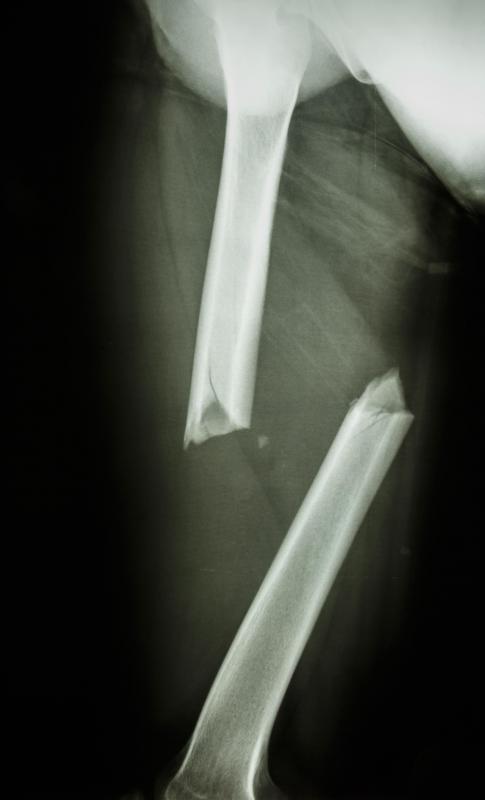At TheHealthBoard, we're committed to delivering accurate, trustworthy information. Our expert-authored content is rigorously fact-checked and sourced from credible authorities. Discover how we uphold the highest standards in providing you with reliable knowledge.
What is Enchondromatosis?
An enchondroma is a benign, or non-cancerous, bone tumor and enchondromatosis, also known as Ollier's disease, is a rare condition where many of these tumors are found all over the body. Enchondromas grow from the cartilage inside bones, and the tumors can be painful, particularly if they become malignant, or cancerous, as can happen occasionally. Sometimes a tumor formed from blood vessels, called a hemangioma, occurs in varying numbers together with the enchondromas, and this condition is known as Maffucci disease. There is no medication available for enchondromatosis and surgery is used if complications arise. Ollier's disease is named after Louis Ollier, the French surgeon who discovered the disorder in the 19th century.
Enchondromatosis often appears in the first few years of life and is more common in boys than girls. Although the condition itself is not life-threatening, it can be painful, may lead to bone fractures, and there is the possibility that some tumors may become malignant, requiring surgical removal. Surgery may also be required if limbs break or become distorted by the presence of the tumors. Enchondromas enlarging within bone can cause one limb to grow shorter than the other or to bend abnormally. Deformities of the knees may occur, especially those that lead to bowing of the legs, although knock-knees are also seen.

Ollier's enchondromatosis typically has an asymmetrical distribution of tumors, but there is also a condition with a symmetrical pattern of enchondromas, known as generalized enchondromatosis. In Ollier's disease the tumors mostly occur inside the bones of the feet and hands, and the long bones of the arms and legs. The disease is diagnosed using a combination of X-rays and other scans such as MRI, or magnetic resonance imaging. A biopsy, or small sample, of an enchondroma may be taken and examined under a microscope, showing distinctive nodules of cartilage contained within bone.

If an enchondroma becomes malignant, it most often turns into a type of cancerous tumor known as a chondrosarcoma. Around a third of people with enchondromatosis will experience at least one enchondroma changing to become malignant. In people with Maffucci disease, the proportion is much higher. Regular screening is recommended to spot malignant changes early, but, perhaps because enchondromatosis is so rare, there is currently no universal agreement on how often this should take place and what methods would be best to use. Neither Ollier's nor Maffucci disease is thought to be hereditary.
AS FEATURED ON:
AS FEATURED ON:















Discuss this Article
Post your comments